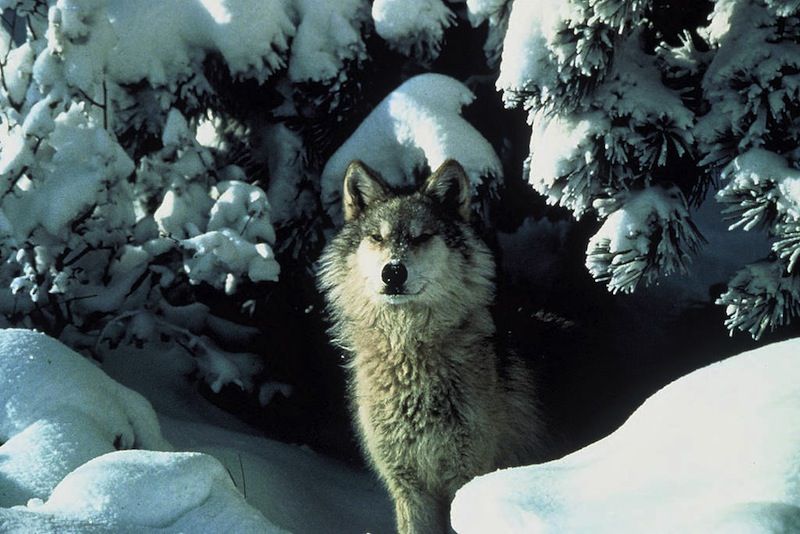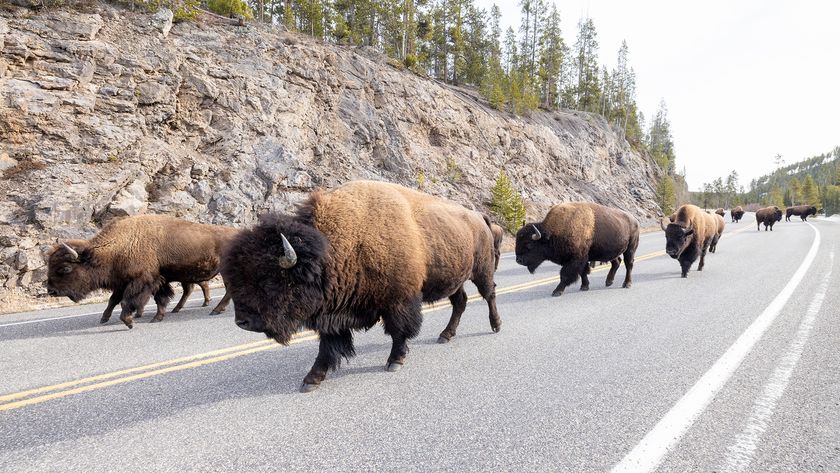
Spending Thousands on Killing Wolves, But At What Cost

Zack Strong contributed this article to Live Science's Expert Voices: Op-Ed & Insights.
Earlier this month, Idaho's Wolf Depredation Control Board ("Board") reported that, over the past several months, it had spent about $143,000 in state taxpayer dollars to kill 31 wolves in the name of protecting livestock.
That's about $4,600 per wolf — a lot of money for the Idaho public to be spending to kill their own wildlife.
Moreover, in most situations, lethal control makes little sense — financial or otherwise. When a wolf is killed, or a pack is wiped out, another will move in to take its place. And the cycle of killing repeats. That's the nature — and failure — of lethal control: because its impact is only temporary, it must be used — and paid for — frequently and indefinitely.
By contrast, nonlethal deterrents can have long-lasting effects, be used for multiple years, and effectively keep both livestock and carnivores alive. For example, the money used by the Board could have paid for at least 10 (or 20, through cost-sharing) full-time livestock herders or "range riders" to collectively monitor and protect thousands — perhaps tens of thousands — of cattle or sheep for an entire season.
Herders and riders keep livestock safe in several ways. As riders in Montana have observed, by maintaining a human presence, and hazing predators when necessary (and legal), it is possible to teach them to leave livestock alone. And as biologists have pointed out, because wolves and other predators are territorial and will keep other predators away, a non-depredating wolf or pack sharing the landscape with livestock may be a rancher's best, cheapest, and longest-lasting defense of all.
Further, by working with cattle, riders can train them to stay closer together as a herd and act more aggressively toward predators, making them less susceptible to predation. Thus, even in a single season, riders can have long-lasting effects.
Sign up for the Live Science daily newsletter now
Get the world’s most fascinating discoveries delivered straight to your inbox.

Alternatively, the money spent by the Board could have purchased miles and miles of reusable electric fencing or fladry — enough to enclose dozens of calving, lambing, or other pastures, year after year, to protect newborn animals, or keep livestock bunched together and less vulnerable.
Or it could have paid for dozens of guard dogs and their food and care. Or multiple motion- or radio-activated guard boxes that emit flashing lights or high-pitched noises when they detect a predator's movement or radio collar. Or it could have helped pay for livestock carcass removal programs, such as those being successfully run in Montana and Wyoming.
Of course, there may be times when a habituated or chronically-depredating wolf has to be killed. But those situations are few and far between. Conflicts are rare to start with (in 2012, wolves were responsible for only about one percent of all Idaho sheep losses (337 out of 32,000); and in 2010, less than 0.01 percent of all Idaho cattle losses (89 out of 93,000)). And the Board itself, in its recent report, acknowledged that last year livestock depredations in the state were lower than ever. Of the few conflicts that do occur, it is likely that many or most are preventable through nonlethal means.
Indeed, in Montana, a growing number of ranching communities — such as NRDC's partners in the Tom Miner Basin and Centennial Valley — are investing more and more in proactive measures, including all of those mentioned above. And agencies such as Montana Fish, Wildlife and Parks, the Montana Livestock Loss Board, and Montana Wildlife Services, are providing critically important support.
These efforts should — and could — serve as a model for the Board in Idaho. For there is nothing in the Board's statutory mandate that restricts its funding to lethal measures only. To the contrary, its mandate states, "Control activities funded by the board shall be consistent with the provisions of section 36-1107(c), Idaho Code," which in turn explicitly authorizes any owner of livestock or domestic animals in Idaho "to take all nonlethal steps they deem necessary to protect their property."
In light of lethal control's high cost, low success, and lack of any long-term benefit, and given that the Board is free to invest in alternative measures, it should take its mandate to heart, and adopt an approach that prioritizes — or at least includes — investment in nonlethal strategies such as riders, fencing and guard animals that effectively reduce losses.
After all, shouldn't the goal — and the best use of public dollars — be to protect, not just to kill?
Follow all of the Expert Voices issues and debates — and become part of the discussion — on Facebook, Twitter and Google+. The views expressed are those of the author and do not necessarily reflect the views of the publisher. This version of the article was originally published on Live Science.












